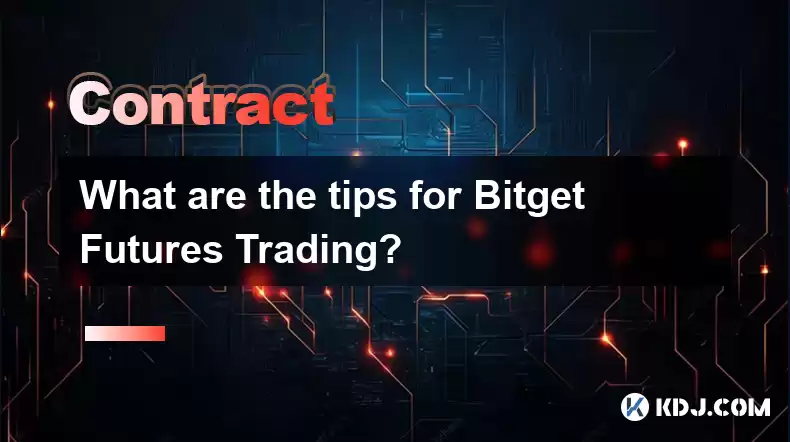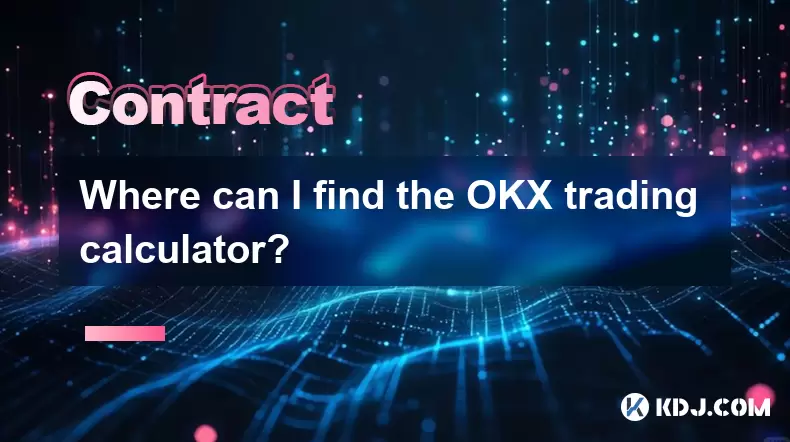-
 Bitcoin
Bitcoin $116700
0.24% -
 Ethereum
Ethereum $3973
4.34% -
 XRP
XRP $3.283
7.68% -
 Tether USDt
Tether USDt $1.000
0.01% -
 BNB
BNB $789.8
2.27% -
 Solana
Solana $176.2
3.31% -
 USDC
USDC $0.9999
0.00% -
 Dogecoin
Dogecoin $0.2238
5.14% -
 TRON
TRON $0.3389
-0.51% -
 Cardano
Cardano $0.7907
4.03% -
 Stellar
Stellar $0.4527
10.02% -
 Hyperliquid
Hyperliquid $41.07
4.27% -
 Sui
Sui $3.794
1.77% -
 Chainlink
Chainlink $19.49
10.40% -
 Bitcoin Cash
Bitcoin Cash $580.9
0.74% -
 Hedera
Hedera $0.2617
4.32% -
 Avalanche
Avalanche $23.41
3.67% -
 Ethena USDe
Ethena USDe $1.001
-0.03% -
 Litecoin
Litecoin $122.4
1.38% -
 Toncoin
Toncoin $3.364
1.49% -
 UNUS SED LEO
UNUS SED LEO $8.988
0.37% -
 Shiba Inu
Shiba Inu $0.00001295
2.82% -
 Uniswap
Uniswap $10.62
5.75% -
 Polkadot
Polkadot $3.922
4.46% -
 Dai
Dai $1.000
0.01% -
 Bitget Token
Bitget Token $4.494
2.15% -
 Monero
Monero $268.0
-1.30% -
 Cronos
Cronos $0.1523
3.68% -
 Pepe
Pepe $0.00001127
4.43% -
 Aave
Aave $285.4
4.85%
What are the tips for Bitget Futures Trading?
Bitget futures trading requires strategic risk management and market analysis to maximize gains; leverage tools like TradingView and maintain emotional discipline for success.
Apr 07, 2025 at 01:49 am

Bitget futures trading can be an exciting and potentially profitable venture, but it requires a strategic approach to manage risks and maximize gains. Whether you're a beginner or an experienced trader, understanding the key tips and strategies can significantly enhance your trading performance. This article delves into essential tips for Bitget futures trading, covering aspects such as market analysis, risk management, and trading psychology.
Understanding Bitget Futures
Bitget futures are derivative contracts that allow traders to speculate on the future price of cryptocurrencies. These contracts can be used to hedge against price fluctuations or to take advantage of market movements. Before diving into trading, it's crucial to understand the mechanics of futures, including leverage, margin, and contract specifications.
- Leverage: Bitget offers various leverage options, allowing traders to amplify their positions. However, higher leverage increases both potential profits and losses.
- Margin: This is the amount of capital required to open and maintain a futures position. Proper margin management is essential to avoid liquidation.
- Contract Specifications: Each futures contract has specific details such as expiration date, size, and settlement method. Understanding these can help in making informed trading decisions.
Conducting Market Analysis
Successful futures trading relies heavily on market analysis. Traders should use both technical and fundamental analysis to make informed decisions.
Technical Analysis
Technical analysis involves studying historical price data and chart patterns to predict future price movements. Key tools include:
- Candlestick Patterns: These can indicate potential reversals or continuations in the market.
- Indicators: Tools like Moving Averages, RSI, and MACD can help identify trends and momentum.
- Support and Resistance Levels: These levels can act as barriers to price movements, helping traders set entry and exit points.
Fundamental Analysis
Fundamental analysis focuses on the underlying factors that affect cryptocurrency prices, such as:
- Market News: Staying updated with the latest news and events can provide insights into potential market movements.
- Economic Indicators: Factors like inflation rates, interest rates, and economic policies can influence cryptocurrency prices.
- Project Developments: Updates on blockchain projects, partnerships, and technological advancements can impact the value of specific cryptocurrencies.
Risk Management Strategies
Effective risk management is crucial in futures trading to protect your capital and ensure long-term success. Here are some key strategies:
- Position Sizing: Determine the size of your positions based on your risk tolerance and account balance. Avoid risking more than a small percentage of your capital on a single trade.
- Stop-Loss Orders: Use stop-loss orders to limit potential losses. Set these orders at levels that align with your risk management plan.
- Diversification: Spread your investments across different assets to reduce the impact of a single trade going wrong.
- Leverage Management: Use leverage cautiously. Higher leverage can lead to significant losses if the market moves against your position.
Developing a Trading Plan
A well-defined trading plan is essential for consistent performance in futures trading. Your plan should include:
- Entry and Exit Criteria: Define clear rules for entering and exiting trades based on your market analysis.
- Risk-Reward Ratio: Aim for trades with a favorable risk-reward ratio, where potential profits outweigh potential losses.
- Trading Goals: Set realistic short-term and long-term goals to guide your trading activities.
- Review and Adjustment: Regularly review your trading performance and adjust your plan as needed to improve results.
Mastering Trading Psychology
Trading psychology plays a significant role in futures trading success. Emotional discipline can help you stick to your trading plan and avoid impulsive decisions. Here are some tips to master your trading psychology:
- Emotional Control: Learn to manage emotions like fear and greed, which can lead to irrational trading decisions.
- Patience: Wait for the right opportunities rather than chasing every market move.
- Discipline: Stick to your trading plan and avoid deviating from your strategies based on short-term market fluctuations.
- Continuous Learning: Stay informed about market trends and continuously improve your trading skills.
Utilizing Bitget's Trading Tools
Bitget offers various tools and features that can enhance your futures trading experience. Make sure to leverage these tools to your advantage:
- TradingView Charts: Use these advanced charting tools to perform technical analysis and identify trading opportunities.
- Copy Trading: Follow successful traders and replicate their strategies to learn and potentially profit.
- Bitget Academy: Access educational resources to improve your understanding of futures trading and market dynamics.
- Mobile App: Use the Bitget mobile app to stay connected to the markets and manage your trades on the go.
Monitoring and Adjusting Your Strategy
The cryptocurrency market is highly volatile, and what works today may not work tomorrow. Continuously monitor your trading performance and be ready to adjust your strategy as needed. Here are some tips for effective monitoring and adjustment:
- Performance Review: Regularly review your trading results to identify what's working and what's not.
- Market Conditions: Stay aware of changing market conditions and adjust your strategies accordingly.
- Feedback Loop: Use feedback from your trades to refine your approach and improve your decision-making process.
Common Questions Related to Bitget Futures Trading
What is leverage in Bitget futures trading?
Leverage in Bitget futures trading allows traders to control a larger position with a smaller amount of capital. It amplifies both potential profits and losses. For example, with 10x leverage, a $100 investment can control a $1,000 position. However, if the market moves against you, losses can exceed your initial investment, so it's crucial to use leverage cautiously.
How can I manage risk in Bitget futures trading?
Risk management in Bitget futures trading involves several strategies, including position sizing, using stop-loss orders, diversifying your investments, and managing leverage. By limiting the amount of capital you risk on each trade and setting clear exit points, you can protect your account from significant losses.
What are the key components of a trading plan for Bitget futures?
A trading plan for Bitget futures should include entry and exit criteria, a risk-reward ratio, trading goals, and a process for reviewing and adjusting your strategy. This plan helps you stay disciplined and make informed trading decisions based on your analysis and risk management rules.
How important is trading psychology in Bitget futures trading?
Trading psychology is crucial in Bitget futures trading as it helps you maintain emotional discipline and avoid impulsive decisions. By managing emotions like fear and greed, practicing patience, and sticking to your trading plan, you can improve your overall trading performance and consistency.
What tools does Bitget offer to enhance futures trading?
Bitget offers several tools to enhance futures trading, including TradingView charts for technical analysis, a copy trading feature to follow successful traders, the Bitget Academy for educational resources, and a mobile app for managing trades on the go. Utilizing these tools can help you make more informed trading decisions and improve your trading experience.
Disclaimer:info@kdj.com
The information provided is not trading advice. kdj.com does not assume any responsibility for any investments made based on the information provided in this article. Cryptocurrencies are highly volatile and it is highly recommended that you invest with caution after thorough research!
If you believe that the content used on this website infringes your copyright, please contact us immediately (info@kdj.com) and we will delete it promptly.
- Punisher Coin: The Altcoin Ready to Punish Your Portfolio with Gains?
- 2025-08-08 22:50:16
- Mutuum Finance, Bitcoin Whales, and Binance: Decoding the Crypto Currents
- 2025-08-08 22:30:11
- Bitcoin, Crypto Market, Volatility: Riding the Rollercoaster in NYC Style
- 2025-08-08 22:50:16
- HTX Copy Trading Extravaganza: Rewards and Opportunities for Traders
- 2025-08-08 23:30:12
- SPX6900 Pumps & TOKEN6900 Presale: Month Growth Mania!
- 2025-08-08 23:30:12
- Dogwifhat, Beanie, and $800,000: A Meme Worth Millions?
- 2025-08-08 23:35:12
Related knowledge

What is the distinction between mark price and last price on KuCoin?
Aug 08,2025 at 01:58pm
Understanding the Basics of Price in Cryptocurrency TradingIn cryptocurrency exchanges like KuCoin, two key price indicators frequently appear on trad...

What are the specific maker and taker fees on KuCoin Futures?
Aug 08,2025 at 08:28am
Understanding Maker and Taker Fees on KuCoin FuturesWhen trading on KuCoin Futures, users encounter two primary types of fees: maker fees and taker fe...

What is the maximum leverage available on KuCoin Futures?
Aug 08,2025 at 10:21am
Understanding Leverage in KuCoin Futures TradingLeverage in KuCoin Futures allows traders to control a larger position size using a smaller amount of ...

What is the minimum deposit for OKX contracts?
Aug 08,2025 at 07:00am
Understanding OKX Contract Trading BasicsOKX is one of the leading cryptocurrency derivatives exchanges, offering a wide range of perpetual and future...

Where can I find the OKX trading calculator?
Aug 08,2025 at 07:49am
Understanding the OKX Trading Calculator FunctionalityThe OKX trading calculator is a powerful analytical tool designed to assist traders in estimatin...

What is copy trading for OKX perpetual contracts?
Aug 08,2025 at 10:42pm
Understanding Copy Trading in the Context of OKX Perpetual ContractsCopy trading is a feature offered by the OKX exchange that enables users to automa...

What is the distinction between mark price and last price on KuCoin?
Aug 08,2025 at 01:58pm
Understanding the Basics of Price in Cryptocurrency TradingIn cryptocurrency exchanges like KuCoin, two key price indicators frequently appear on trad...

What are the specific maker and taker fees on KuCoin Futures?
Aug 08,2025 at 08:28am
Understanding Maker and Taker Fees on KuCoin FuturesWhen trading on KuCoin Futures, users encounter two primary types of fees: maker fees and taker fe...

What is the maximum leverage available on KuCoin Futures?
Aug 08,2025 at 10:21am
Understanding Leverage in KuCoin Futures TradingLeverage in KuCoin Futures allows traders to control a larger position size using a smaller amount of ...

What is the minimum deposit for OKX contracts?
Aug 08,2025 at 07:00am
Understanding OKX Contract Trading BasicsOKX is one of the leading cryptocurrency derivatives exchanges, offering a wide range of perpetual and future...

Where can I find the OKX trading calculator?
Aug 08,2025 at 07:49am
Understanding the OKX Trading Calculator FunctionalityThe OKX trading calculator is a powerful analytical tool designed to assist traders in estimatin...

What is copy trading for OKX perpetual contracts?
Aug 08,2025 at 10:42pm
Understanding Copy Trading in the Context of OKX Perpetual ContractsCopy trading is a feature offered by the OKX exchange that enables users to automa...
See all articles

























































































